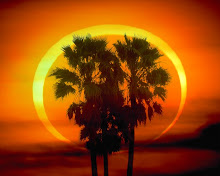Note: I originally intended to this to be a film review of David Lynch's Mulholland drive for Netflix, but it was rejected for being too long so I just posted it here. And, it isn't so much a review as a collection of my thoughts about it. It assumes the reader is familiar with the film as I don't bother discussing cast, crew or a summary of the story line.I first saw Mulholland Drive in the theater back in 2001. At the time I enjoyed its surreal craziness, but I didn't understand it at all. Thankfully my wife is smarter than I am and she explained it to me at dinner afterwards. Then it clicked with me and I had so see it again so we went back the next weekend with friends. This time around the story made much more sense, but it still seemed that there were a number of extraneous scenes that didn't belong and just seemed like filler.
This past weekend, though, we watched it again on DVD and paused the film frequently to talk ourselves through the story. This time everything fell into place and all those "filler" scenes now made sense and we were able to rationalize how pretty much everything fit nicely into Diane's deteriorating delusions. The more I watched it the more I understood the symbolic elements of the dream sequences.
For me, understanding and really appreciating Mulholland Drive was a multi-step process.
The first time through the film it was difficult to even figure out who's story this was, which is complicated because Betty's name changes to Diane part way through. After that it helped that I was familiar with movies like Jacob's Ladder or An Occurrence at Owl Creek Bridge.
Then it took a bit of time to figure out the two levels of "reality" within the film; which were "real" and which were delusion. And, finally, the film requires a willingness to examine the dream sequences symbolically rather than literally. For me that's the real beauty and genius of Mulholland Drive. The bumbling hitman, the blue box and key, the demented homeless person living behind the diner; these can't be understood by their literal meaning, but only by asking what they mean to Diane. What do they represent to her?
Once I could answer those questions the film was transformed from something chaotic and confusing into something really very beautiful.
Also I have to say that the scene in the Club Silencio is now one of my favorite movie scenes of all time. It is in this scene in which Diane herself realizes what it happening and her moment of clarity combined with the truly haunting singing of Roy Orbison's "Crying" (in Spanish) sends shivers down my spine every time I see it.
It took some patience and effort, but in the end Mulholland Drive became for me a fairly simple plot with a tight narrative and is a very human tale of love and loss; ambition and failure. It doesn't seem like that at first glance, but that's part of the beauty of it. If it was easy to grasp it wouldn't be as meaningful. But, once you do grasp it, the narrative resonates on both an intellectual and very visceral level. It hits you simultaneously deep in your brain and deep in your heart.






















